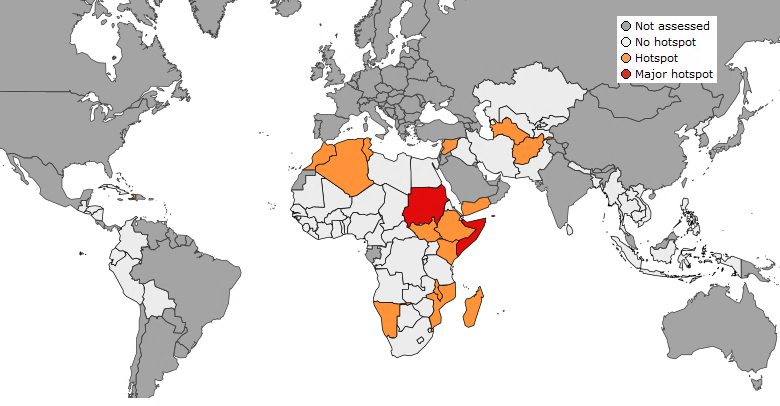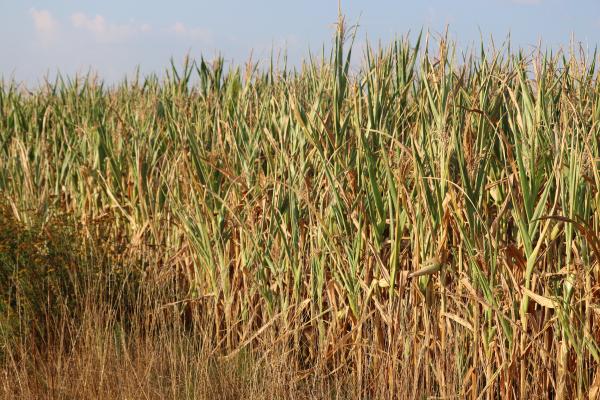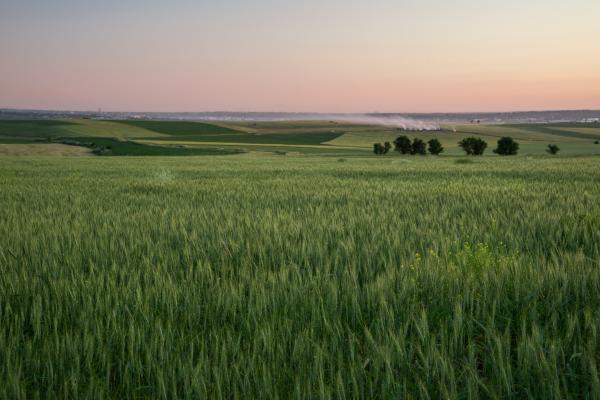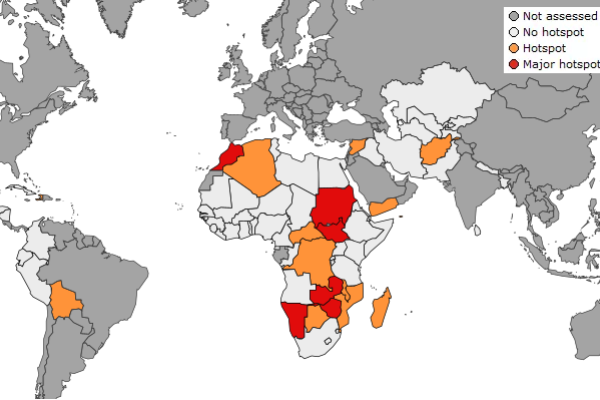
Main findings of the May global overview:
- In Southern Africa, the main cereal season is ending with generally good prospects thanks to favourable agroclimatic conditions in most parts of the region throughout the 2022/2023 agricultural season. However, drought and flooding have impacted crop development and will result in reduced yields in south-western Angola, northern Namibia, southern Malawi, and Mozambique. Pastoral conditions are favourable in most parts, except for some areas in Namibia.
- In East Africa, good rainfall in May has been beneficial for crops and rangelands. However, the high intensity rainfall has led to localised floods, with the largest floods in the Shabelle river basin in Somalia. The ICPAC seasonal weather forecast for the June-September 2023 season show high chances of drier and hotter than usual conditions. The new conflict in Sudan adds further pressure to an already difficult food security situation. In May 2023, in Djibouti, Kenya, Somalia, South Sudan, Sudan and Uganda, around 33 million people are in IPC Phase 3 or worse (FSNWG, May 2023).
- In West Africa, first-season maize crop conditions are generally favourable in the southern bi-modal parts of the region. In some parts of Nigeria, crop conditions are below average due to the conflict affecting north-east, north-west, and north-central states. In most parts of the Sahelian band, land preparation is ongoing and planting will start in June. The Copernicus C3S Multimodel seasonal rainfall forecast for the period June-July 2023 indicates average to above average rainfall in most parts of the region, except for north-western Nigeria, northern parts of Cameroon, and southern Chad.
- In North Africa, the winter crop season was affected by major drought that caused crop failure in parts of Tunisia, Algeria and Morocco and led to crop yield expectations below the 5-year average in all three countries, with the lowest forecasts in Tunisia (-30% of the 5-year average for barley, according to the May MARS bulletin). In contrast, conditions have improved for winter cereals in most areas of the Middle East and prospects are favourable, except in north-eastern Syria (Hassakeh), north-western Iraq (Ninewa), and north-eastern Iran (Golestan, Khorasan). In Yemen, although sorghum is growing under favourable moisture conditions, food insecurity continues to affect 17 out of 30 million people.
- In Central Asia, prospects for winter cereals are close to or above-average in most parts (Uzbekistan, Tajikistan, southern Kazakhstan), except in Turkmenistan and Kyrgyzstan. In Afghanistan, the harvest of winter wheat started in May and prospects are mixed. However, food insecurity remains very high. In South Asia, the harvest of winter cereals (rabi crops) in Pakistan and of irrigated dry-season Boro rice in Bangladesh have nearly been completed with average and above average prospects respectively. In Sri Lanka, second (Yala) rice is growing under favourable moisture conditions.
- In continental South-East Asia and the Philippines, harvest of irrigated dry-season rice is completed or is nearing completion and prospects are average to above average. Planting of main season rice is delayed with respect to 2022 in Thailand, Cambodia, and Laos due to poor rainfall in the last two months. In Indonesia, the harvest of wet-season rice is nearing completion with favourable prospects while the planting of dry season rice has started under average conditions.
- In Latin America and Caribbean islands, the first cycle of maize has started in El Salvador, Guatemala, Honduras, and Nicaragua and has benefitted from normal rainfall in the last month except in localised areas. Rainfall conditions will be drier than normal in the entire region until the end of June according to the Copernicus C3 Multimodel. In Haiti, poor crop conditions are observed in around a third of the cropland despite normal rainfall in the past month. Similarly, in Bolivia, poor vegetation conditions are observed in marginal grain producing regions. In Cuba, Colombia, Ecuador and Peru, croplands show normal conditions, and the prospect of rainfall is average to above average in most areas until end of June.
The next assessment is scheduled for the end of June 2023.
Details
- Reference
- ASAP assessment May 2023
- Publication date
- 7 June 2023
- Author
- Joint Research Centre
- JRC portfolios




